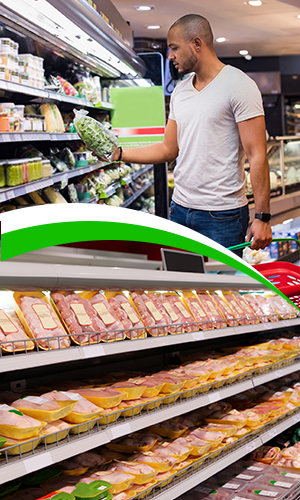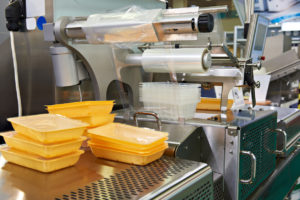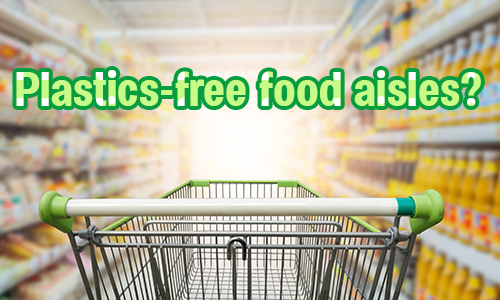When it comes to plastic packaging alternatives, U.S. food manufacturers and retailers are in a tough spot: it’s hard to find packaging that outperforms plastic ‘clamshell’ containers and molded food trays.
But as world awareness increases about bulging landfills and oceans swelling with plastic, the need for food container alternatives may go from “wouldn’t it be nice” to policy-driven “we need to do something — now.”
Here’s the thing…
We love plastic packaging

An inventor in the 1970s created the first molded plastic packaging. This innovation cradled and protected consumer goods and sealed them safely inside a crystal-clear cocoon.
Over time, this packaging morphed into the hinged food version found in every neighborhood supermarket — perfect for protecting blueberries, a to-go salad or a slice of apple pie.
But most plastic clamshell containers don’t recycle well. The main problems: the plastic compositions vary and many recycling machines can’t process them.
Plus, China, where the U.S. sends much of its plastic waste for recycling, has canceled U.S. barge contracts, leaving recycling companies drowning in plastic waste — pleading with regional landfills for permission to dump the trash.
Then there’s Europe’s “policy” approach to plastic packaging alternatives
England’s prime minister Theresa May recently announced plans to conquer plastic packaging. In fact, it’s her goal to eliminate all “avoidable plastic” within 25 years, including a proposal for plastics-free aisles in supermarkets.
One UK supermarket is off to an early start. The supermarket chain Iceland plans to eliminate plastic packaging for its store-brand products by 2023. That includes requiring its food and beverage suppliers to use alternative packing materials such as paper, cellulose, glass, metal or…something new.

Alternative packaging — still in development
But finding a viable plastic packaging alternative isn’t easy. Innovators must create products that are fully renewable, recyclable or biodegradable.
One company Stora Enso, in a partnership with Sulapac, is leading the way with a bio-composite material made from wood fibers. The company is confident it “can reduce the consumption of plastic materials by up to 60%.”
In fact, they claim that their product “has all the benefits of plastic yet it completely bio-degrades without the issues of microplastic.”
It’s just a matter of time
Ultimately, supermarket foods (from arugula to steaks) need a protective barrier. And plastic is a great choice: it’s lightweight, tough and consumer-friendly. But its “time in service” is short compared to its afterlife in landfills and oceans.
Switching from plastic will take innovation and planning, but 25 years from now, food packaging is sure to look quite different.
What’s your take on implementing plastic packaging alternatives? Do you think we’ll see plastics-free aisles in U.S. supermarkets in the future? Let us know in the comments what you think.
Wondering what to do with your waste food product? We can salvage your inedible and unusable inventory for cash — and keep it out of the landfill. Get in touch to learn more.



